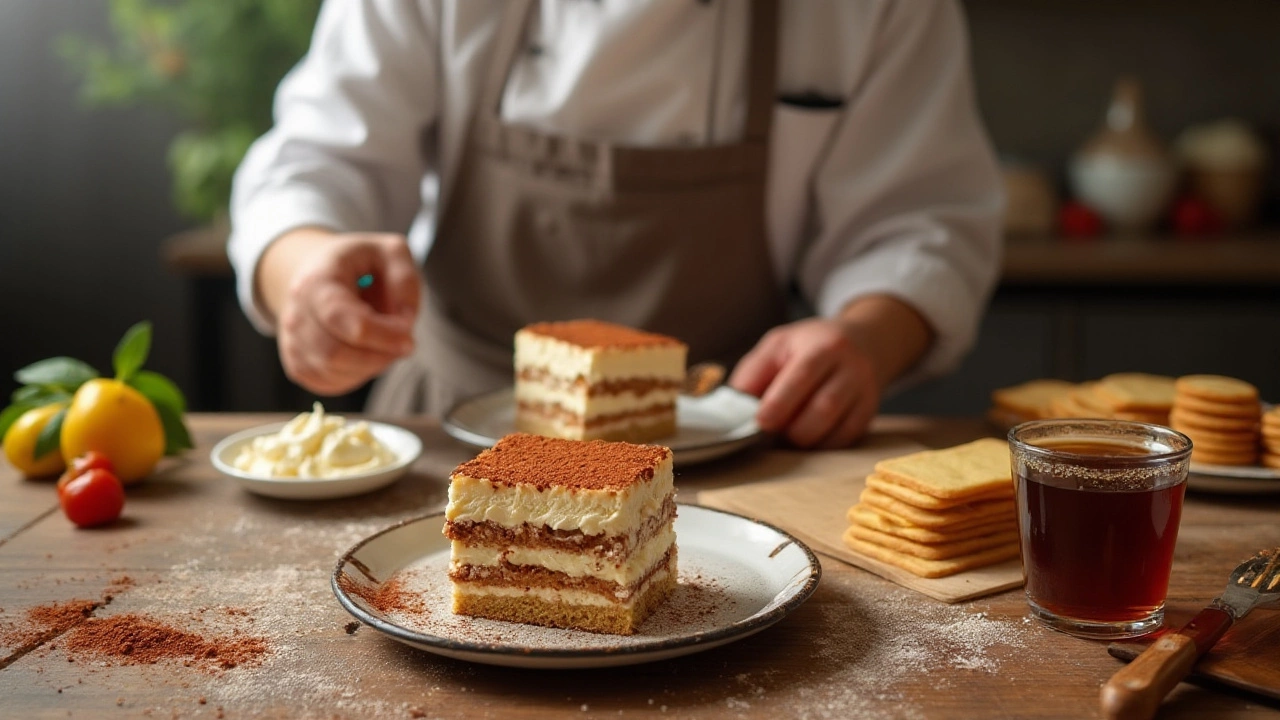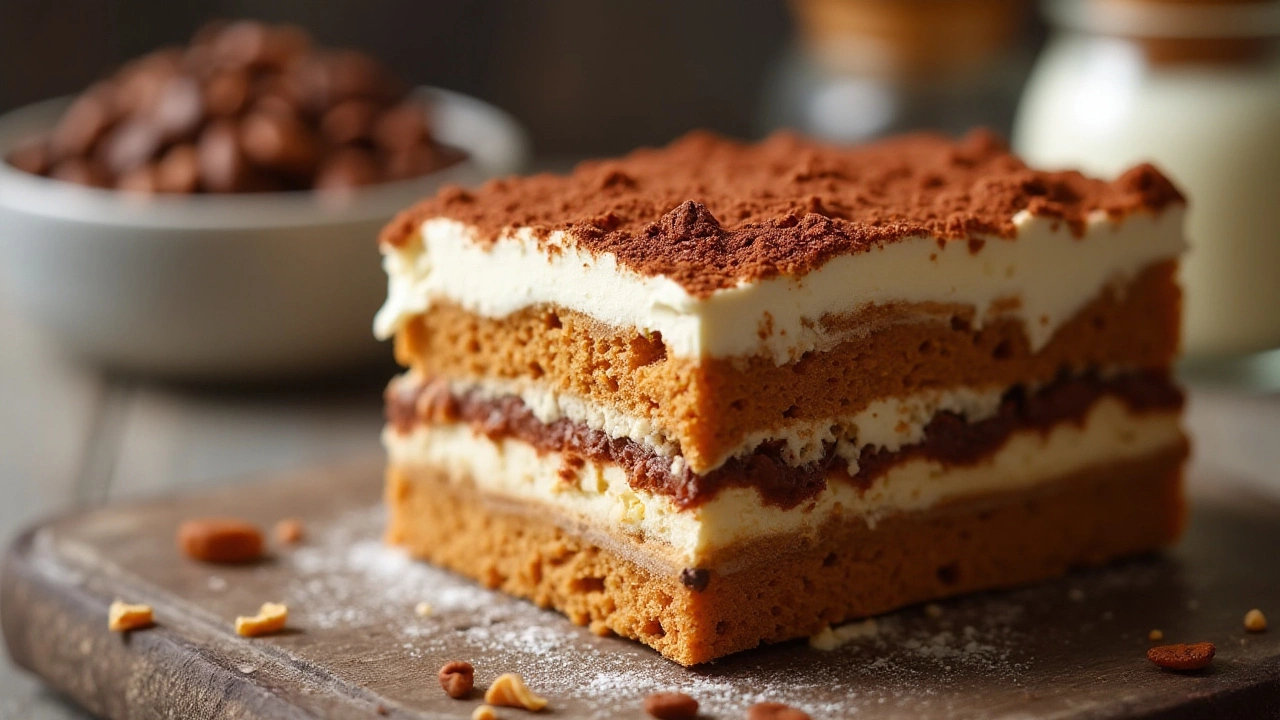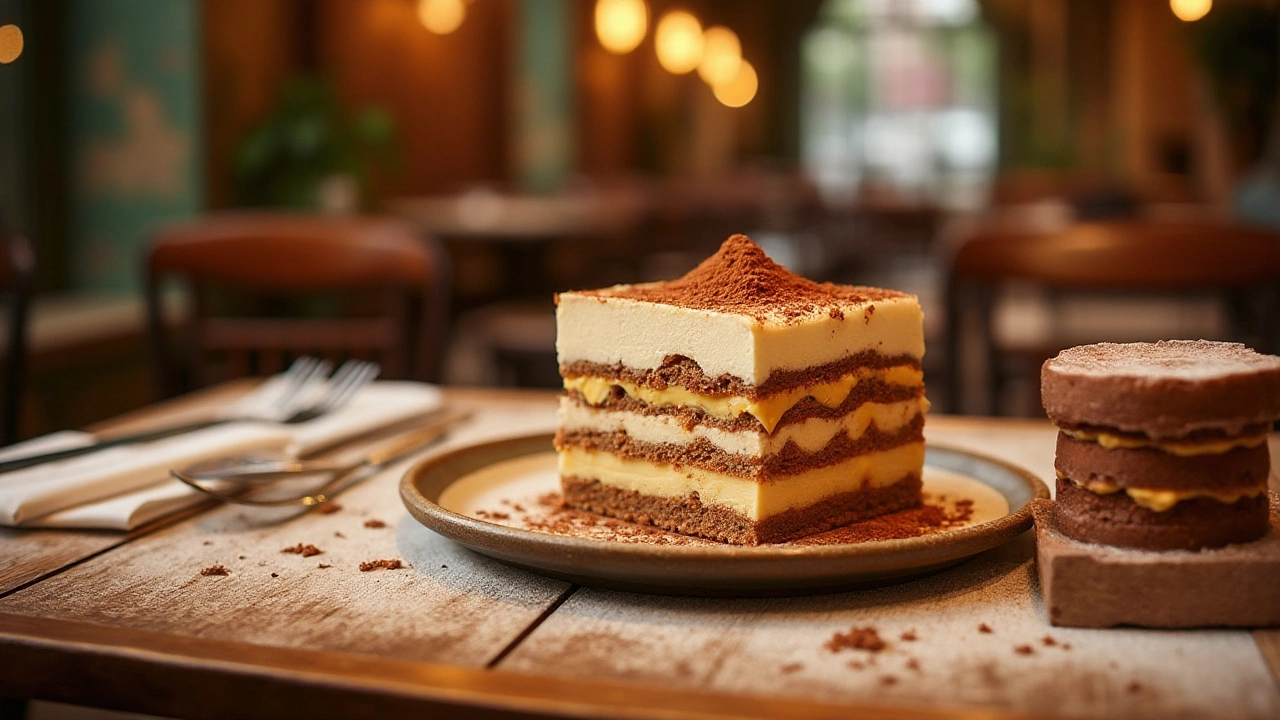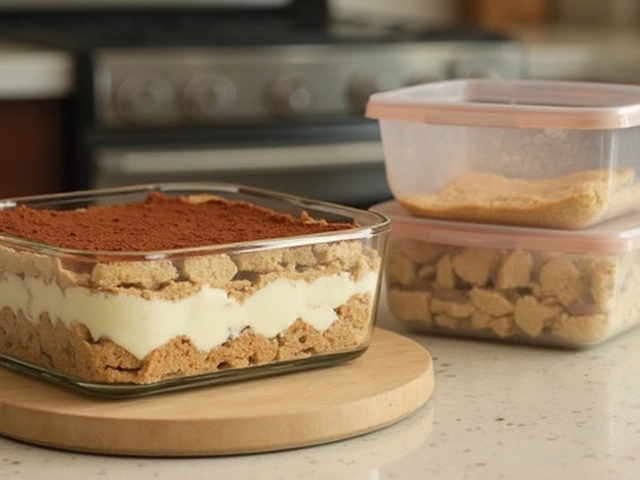
Tiramisu, the iconic and creamy Italian dessert, with its layered charm and coffee-kissed allure, sparks curiosity not just for its flavor but also for its price tag. This beloved treat, rich with tradition and decadence, often leaves enthusiasts wondering what contributes to its cost.
Understanding the financial side begins with an exploration of its core ingredients, each bringing their unique touch of luxury. But fear not—crafting tiramisu can be both a rewarding and cost-effective experience when approached with the right tips and insights.
- Ingredient Breakdown
- The Art of Making Tiramisu
- Cost-Saving Tips for Home Bakers
- Exploring Tiramisu Variations
Ingredient Breakdown
When it comes to the heavenly delight of tiramisu, the magic lies in its deceptively simple yet exquisite ingredients. At the heart of this dessert is mascarpone cheese, a rich and creamy element that defines its luscious texture. This Italian cheese, known for its high butterfat content, is both a luxury and a necessity for achieving that velvety smooth consistency. A single tub can be quite an investment, easily accounting for a significant portion of the tiramisu's cost.
Next up is the robust embrace of espresso. The boldness of freshly brewed espresso is what gives tiramisu its invigorating kick. While instant coffee might seem like a convenient substitute, authentic enthusiasts swear by the deep, aromatic quality only true espresso can provide. This ingredient's importance cannot be overstated, and sourcing quality coffee beans is crucial for the perfect cup to soak the ladyfingers or savoiardi. Speaking of which, these light and airy sponge biscuits form the structural backbone of tiramisu. Historically, they are a nod to Italy's confectionary artistry, designed to elegantly hold their shape while soaking in flavors.
The list wouldn't be complete without mentioning the combination of sugar and egg yolks, whisked into a delightful zabaglione that sweetens and sets the base. It's a delicate balance, one that requires both patience and finesse to create. Incorporating quality cocoa powder dusted across the top, the final touch to this intricate dessert, ensures each bite finishes on a rich chocolatey note.
"The perfect tiramisu is an exquisite marriage of its components," notes Chef Giuseppe Silvestri, an Italian culinary expert renowned for his classic desserts. "Each ingredient must shine in its role, bringing balance and depth to the dish."
The cumulative price of these ingredients can vary depending on their source. While homemade versions provide the opportunity to select premium components, opting for store-bought variants might substitute certain elements for cost-effectiveness. This could, however, alter the flavor profile, making ingredient selection a key consideration for both taste and economy.

The Art of Making Tiramisu
Creating a masterpiece like tiramisu is a labor of love that is greatly rewarding, both visually and tastefully. At the heart of this Italian delicacy is a harmonious blend of rich mascarpone cheese, espresso-soaked ladyfingers, delicate cocoa dusting, and smooth eggs, each playing their role in a symphony of flavors and textures. For those venturing into the sweet craft of making tiramisu, it's essential to understand the balance between each element. It is the espresso, Italian for 'quick', that ties everything together with its bold, invigorating essence. Caffeine enthusiasts would agree that the choice of coffee could easily make or break the dessert.
While ingredients matter greatly, the assembly of tiramisu demands finesse and patience. Begin by carefully separating egg yolks and whites, ensuring none of the yolk touches the whites, or it may affect the beating process. Beat the yolks with sugar until they reach a pale, satin-like consistency—a nitrogenating factor crucial for the creaminess of the dessert. When folding in the mascarpone, which is best used at room temperature for smoother incorporation, gentle movements are needed to maintain the airy texture. Next comes the step of soaking ladyfingers in bold espresso, a step often fraught with debate. The perfect dip is brief—just enough for the ladyfingers to absorb the flavor without turning mushy.
The assembly itself is akin to painting, each layer carefully applied to achieve a lovely stratification. Start by spreading a layer of the mascarpone mixture, followed by a precisely-aligned layer of coffee-drenched ladyfingers. Repeat this layering, being cautious to finish with a top layer of mascarpone. A cocoa powder dusting adds the final touch, as it covers the velvety surface and provides an aromatic hint upon every bite. Allowing a minimum of four hours in the refrigerator, the dessert achieves its signature melding of flavors—a challenge of patience but the secret to its refined taste. As author Mimi Thorisson puts it, "Tiramisu is not made—it's created."

Cost-Saving Tips for Home Bakers
If you are intrigued by the decadent allure of tiramisu but worry about the expense, fret not. Crafting this delightful dessert at home can be budget-friendly with a handful of thoughtful strategies. The secret lies in making smart substitutions and knowing where to splurge and save. Start with the basics: the mascarpone cheese, which can sometimes feel like a luxury item. Instead, consider using a mixture of cream cheese and whipped cream to achieve that creamy texture without splurging. It's a small compromise that won't drastically alter the final taste.
Let's take a look at another expensive ingredient, espresso. A worthy alternative is using instant coffee, which can create a similarly intense flavor. Brew it to a strong concentration, and you'll have a cost-effective solution that still captures that unmistakable coffee depth that is essential to any good tiramisu. For the layer of ladyfingers, a traditional staple, consider baking them yourself. It's easier than you think and often more economical, not to mention the added satisfaction of homemade components in your dessert.
Beyond ingredients, understanding the art of balance is crucial. It is tempting to layer generously with each ingredient, but moderation can be the key to reducing costs. A moderate spread of the coffee mixture and mascarpone will still deliver the signature taste without the need for excess. Speaking of balance, don't skimp on the cocoa powder dusting—a little goes a long way in enhancing the flavors.
There is also wisdom in buying in bulk, especially if tiramisu becomes a frequent request at your dinner table. Ingredients like cocoa powder, instant coffee, and sugar will often offer better pricing per gram when purchased in larger quantities. Speaking from a different perspective, renowned chef Nigella Lawson once shared the wisdom,
‘Cooking is about imbibing the economy of ingredients; there’s artistry in making something spectacular from simple things.’This mindset can transform your cooking approach.
To help visualize the potential savings, let's outline a quick comparison. The average cost of a store-bought tiramisu might range around $15 to $25 per serving, whereas a homemade version—when using strategic substitutes—can lower the cost to about $7 to $10, depending on your local prices and portions. Here’s a brief comparison:
| Item | Store-bought Cost | Homemade Cost |
|---|---|---|
| Mascarpone Cheese | $6 | $3 (with substitute) |
| Espresso/Instant Coffee | $4 | $1.50 |
| Ladyfingers | $5 | $2 (homemade) |
Lastly, remember that practice not only makes perfect but also brings down the costs associated with common mistakes. Each attempt becomes not just a delightful practice of patience and creativity but also a means of refining your techniques to minimize waste. By implementing these cost-saving tips, you can relish in the decadence of tiramisu, knowing you’ve savored its splendor without the extravagant expense.

Exploring Tiramisu Variations
The classic tiramisu is a symphony of coffee, mascarpone, and cocoa. But for many adventurous bakers and chefs, the allure of adding a personal twist is irresistible. Over the years, this traditional Italian dessert has inspired a variety of interpretations that depart from its original recipe while maintaining its indulgent essence. Some variations go beyond just altering ingredients but also include creative presentations and serving styles, turning this ancient delight into a modern canvas for culinary expression. Perhaps one of the most intriguing aspects of exploring tiramisu variations is how different global influences can blend together to create something new, yet reminiscent of the comforting familiarity of the original. Imagine, for instance, substituting the classic espresso with matcha tea, resulting in an entirely different flavor profile that still honors the dessert's layered tradition.
One popular modern take is the fruit tiramisu. This version integrates fresh fruits like strawberries or raspberries, adding a burst of color and freshness that pairs beautifully with the creamy mascarpone layers. The subtle acidity of the fruits brings a refreshing contrast to the richness of the cream, often making it a favorite choice for summer gatherings. A creative twist involves layering a mix of berries between the traditional ladyfingers, with some recipes even suggesting a splash of wine or fruit liqueur to enhance the flavor complexity. In this way, the tiramisu becomes more than a dessert; it's a celebration of the bounty of nature harmonizing with the classical.
Perhaps you're more inclined toward indulgence. If so, a chocolate tiramisu might be the variation that captures your heart. Incorporating layers of dark chocolate or cocoa mousse not only intensifies the richness but adds a decadent depth to each spoonful. As an innovative touch, some enthusiasts like to sprinkle chocolate shavings or incorporate cocoa nibs between the layers for an added textural contrast. Chocolate tiramisu showcases the dessert's versatility and proves how a few simple additions can elevate a classic to new gourmet heights. Restaurants and home kitchens alike find this adaptation a hit, often adapting recipes to include layers of Nutella or swirls of dark chocolate ganache for an even richer delight.
"Tiramisu is like the little black dress of desserts—you can dress it up or down, and it never quite goes out of style," remarks Rosalba Gioffre, a well-known pastry chef in Rome.Gluten-free enthusiasts and health-conscious dessert lovers aren't left behind in the evolution of tiramisu varieties. With a rising interest in dietary preferences and restrictions, many variations now cater to these demands by using almond flour or gluten-free biscuits instead of traditional ladyfingers. Such adjustments ensure that everyone can enjoy the luxury of this beloved treat without compromise. Furthermore, lighter versions often substitute traditional mascarpone with Greek yogurt or ricotta, providing a healthier alternative while retaining the creamy texture that tiramisu aficionados adore.
The truly experimental might find joy in unorthodox variations such as matcha tiramisu or even tiramisu with a spicy kick, where chili chocolate or cayenne pepper infuses an unexpected warmth to the sweet dessert. These innovations prove that the foundation of tiramisu is remarkably sturdy, capable of supporting a myriad of adaptations that continue to surprise and delight the palate. As cooks around the world take inspiration from different cultures and ingredients, this classic dessert continuously evolves, breathing new life into its time-honored form.





